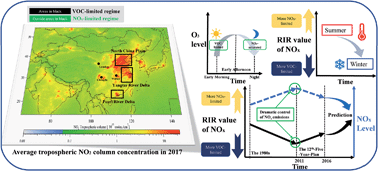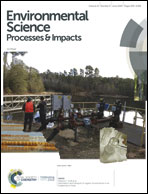Overview on the spatial–temporal characteristics of the ozone formation regime in China
Abstract
Ozone (O3), a main component in photochemical smog, is a secondary pollutant formed through complex photochemical reactions involving nitrogen oxides (NOx) and volatile organic compounds (VOCs). In the past few decades, with the rapid economic development, industrialization and urbanization, the mixing ratio of O3 has increased substantially in China. O3 non-attainment days have been frequently observed. Despite great efforts made in the past few years, it is still difficult to alleviate O3 pollution in China, due to its non-linear relationship with the precursors. In view of the severe situation in China, this study presents a comprehensive review on the spatial–temporal variations of the relationship between O3 and its precursors (i.e. O3 formation regime), built upon the previous reviews of the spatial–temporal variations of O3 and its precursor levels. Valuable findings from previous studies are laid out for a better understanding of O3 pollution, followed by implications for the control of O3 pollution. This literature review indicates that O3 formation in most areas of the North China Plain (NCP), Yangtze River Delta (YRD) and Pearl River Delta (PRD) regions is in a VOC-limited regime during the high-O3 seasons due to dramatic emissions from human activities in cities. Outside these metropolitan areas, a NOx-limited regime dominates rural/remote areas. From summer to winter, the O3 formation regime over China shows a tendency to shift to a VOC-limited regime. Furthermore, O3 formation in China shifted toward increasing sensitivity to VOC emissions before the 12th Five-Year-Plan. However, after the 12th Five-Year-Plan, successful reduction of NOx slowed down this trend. Further effective control of VOCs is expected to achieve sustained O3 attainment in the future. To timely solve the current O3 pollution problem, precise control of O3 precursors is proposed, together with the joint prevention and control of regional air pollution.



 Please wait while we load your content...
Please wait while we load your content...